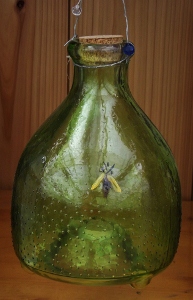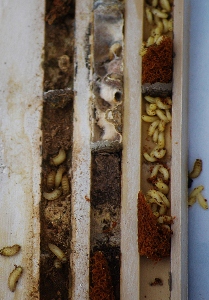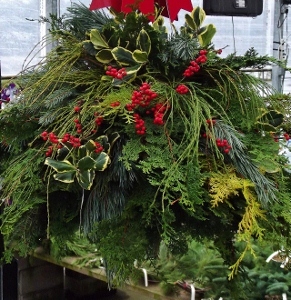 Pest and Life Cycle (Pulvinaria floccifera) – Oval-shaped adult females (tan with brown edges) lay white egg clusters (shown above / about 1/4″ long with up to 1000 eggs) on the underside of leaves in May. The eggs hatch into yellowish-brown crawlers in early summer, with immature nymphs overwintering on foliage and stems. It is most commonly found on Holly (Ilex) in coastal British Columbia but has numerous other hosts including Camellia, Pittosporum, Euonymus, Hedera helix (English Ivy), Taxus (Yew), Hydrangea, Rhododendron and Maple.
Pest and Life Cycle (Pulvinaria floccifera) – Oval-shaped adult females (tan with brown edges) lay white egg clusters (shown above / about 1/4″ long with up to 1000 eggs) on the underside of leaves in May. The eggs hatch into yellowish-brown crawlers in early summer, with immature nymphs overwintering on foliage and stems. It is most commonly found on Holly (Ilex) in coastal British Columbia but has numerous other hosts including Camellia, Pittosporum, Euonymus, Hedera helix (English Ivy), Taxus (Yew), Hydrangea, Rhododendron and Maple.
Symptoms – Most gardeners notice the prominent white ovisacs (egg clusters shown) on the leaf reverse. Secondary symptoms include honeydew (sticky leaves) and the black sooty mold that grows on it – both of which are a result of the scale feeding on the leaves or needles. Heavy infestations can weaken plants, causing discoloration or pale foliage.
Management – The best time to control Cottony Camellia Scale is when the immature crawlers hatch (check from late spring to early summer), at which time an application of insecticidal soap is quite effective – making sure that the underside of the foliage is also given a spray. Dormant Oils (check label for plant compatibility) can be used on overwintering nymphs but they must be applied before the new foliage emerges in early spring. Superior or Summer Oils can be used later in the season. Heavily infested branches or twigs can be pruned out (and disposed of) as long as this does not affect the plant’s overall aesthetic appearance.
Prevention – 1. Always carefully inspect potential host plants at the garden center or nursery before purchase. 2. Monitor host plants on a regular basis, as it is much easier to eradicate a minor infestation. 3. Keep your shrubs and trees healthy, as they will be less likely to attract scale pests. 4. Control ants on host plants as they harvest honeydew as a food source and may deter natural scale predators.























































